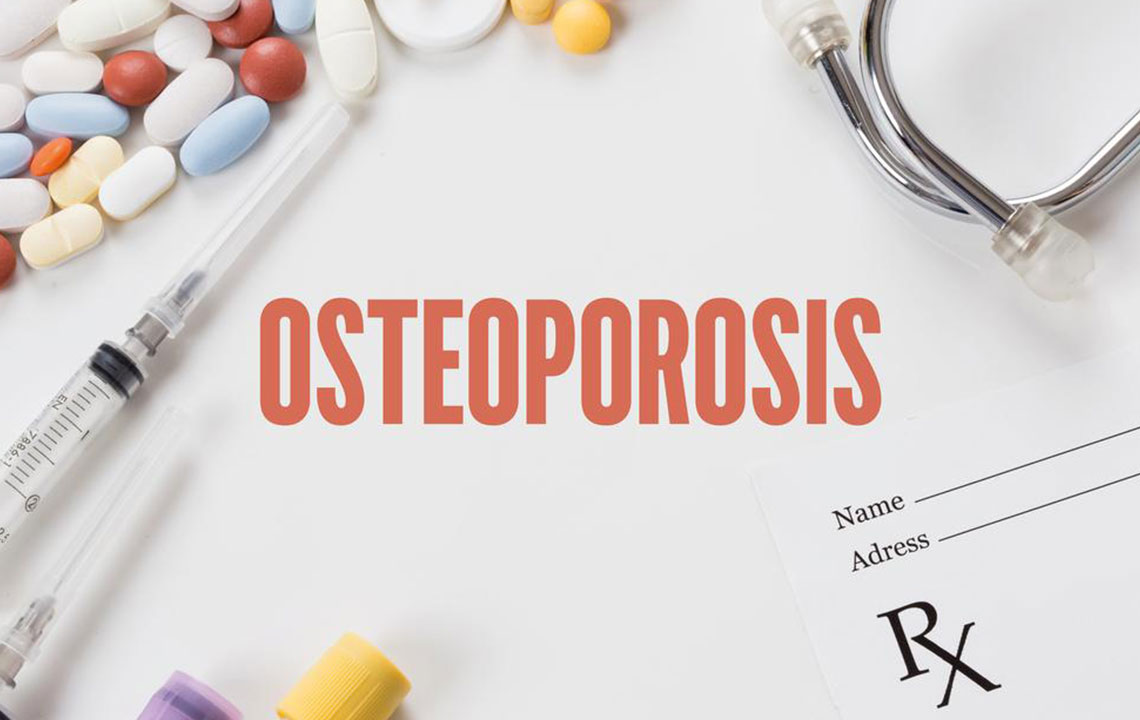Comprehensive Guide to Key Nutrients and Medications for Osteoporosis Prevention
This comprehensive article explores essential nutrients, lifestyle practices, and medical treatments to prevent osteoporosis. It emphasizes the importance of calcium, vitamin D, protein, magnesium, and vitamins C and K in supporting bone health. The guide also reviews effective medications like Romosozumab, Prolia, and Fosamax, highlighting their roles in managing bone density loss. Combining proper nutrition, physical activity, and medical interventions can significantly reduce fracture risk and promote stronger bones, especially in at-risk populations such as postmenopausal women and the elderly. Prevention and early detection are key to maintaining mobility and health as we age.

Comprehensive Guide to Key Nutrients and Medications for Osteoporosis Prevention
Osteoporosis is a progressive condition characterized by weakened bones, which significantly increases the risk of fractures and impairs the body's natural ability to regenerate bone mineral density. This silent disease often develops gradually without obvious symptoms until a fracture occurs. Understanding how to prevent osteoporosis through essential nutrients, lifestyle adjustments, and available medications is crucial, especially for individuals at higher risk due to age, gender, or genetic factors. In this detailed guide, we will explore the vital dietary components, lifestyle practices, and medical treatments that can help maintain healthy bones and prevent osteoporosis from compromising your mobility and quality of life.
Understanding Osteoporosis and Its Impact
Osteoporosis primarily affects older adults, with women post-menopause being particularly vulnerable due to the decline in estrogen levels, which plays a protective role in bone maintenance. The disease weakens bones over time, causing them to become porous and fragile. Commonly affected areas include the wrists, spine, and hips—sites prone to fractures that can lead to severe complications, loss of independence, and reduced life expectancy. Although aging is a significant risk factor, lifestyle choices, nutrition, and medical interventions can significantly influence the development and progression of osteoporosis.
The Role of Nutrition in Osteoporosis Prevention
A balanced diet rich in specific nutrients is fundamental in maintaining bone health. Proper nutrition helps slow the progression of bone loss and supports bone regeneration. Below, we delve into the key dietary components essential for preventing osteoporosis.
Calcium: The Building Block of Bones
Calcium is the most abundant mineral in bone tissue, providing strength and structure. Ensuring adequate calcium intake is vital for everyone, particularly postmenopausal women and the elderly. Heart-healthy leafy greens such as kale, turnip greens, spinach, and collard greens are excellent plant-based sources of calcium. Dairy products like milk, cheese, and yogurt are traditional calcium-rich foods that contribute substantially to daily calcium needs.
For individuals with lactose intolerance or dairy allergies, fortified beverages such as soy milk, almond milk, or rice milk offer excellent alternatives. These beverages are often enriched with calcium and vitamin D to enhance absorption and bone health. Additionally, calcium-fortified cereals and juices are convenient options to meet daily requirements.
Vitamin D and Sunlight Exposure
Vitamin D is essential for calcium absorption in the intestines, ensuring that the calcium consumed actually contributes to bone strength. Dietary sources include fortified foods such as certain cereals, orange juice, and fish oils. Exposure to sunlight triggers the synthesis of vitamin D in the skin, which is why spending time outdoors is beneficial. For individuals with limited sun exposure, vitamin D supplements can be an effective way to maintain optimal levels and support calcium metabolism.
Protein and Magnesium: Supporting Bone Matrix
Protein is a crucial component of bone tissue, contributing to the overall matrix and strength. Lean meats like chicken, turkey, and seafood provide high-quality protein, which is necessary for osteoblast activity—the cells responsible for forming new bone tissue. Eggs and fish are also excellent protein sources.
Magnesium plays a supportive role in bone health by aiding in the conversion of vitamin D into its active form. Nuts such as almonds, cashews, and peanuts, along with seeds, are rich in magnesium and should be included in a diet aimed at osteoporosis prevention.
Fruits and Vegetables Rich in Vitamins C and K
Vitamin C, predominantly found in citrus fruits like oranges, lemons, kiwis, and in tomatoes, boosts immunity and aids in collagen synthesis, which forms the structural scaffold of bones. It also supports the healing of fractures if they occur.
Vitamin K, found in green leafy vegetables such as broccoli, Brussels sprouts, turnip greens, and cabbage, plays a pivotal role in bone mineralization and activating osteocalcin, a protein essential for calcium binding in bones.
Medical Treatments for Osteoporosis
Beyond nutrition and lifestyle, pharmacological options are available to prevent further bone loss and stimulate bone formation. The development of advanced medications has significantly improved the management of osteoporosis, especially for individuals with severe bone loss or high fracture risk.
Romosozumab (Evenity)
Romosozumab, marketed as Evenity, is an FDA-approved monoclonal antibody treatment that targets sclerostin—a protein that inhibits bone formation. By blocking sclerostin, Romosozumab reduces bone resorption while simultaneously stimulating new bone growth. It is primarily prescribed for postmenopausal women at high risk of fracture and has shown promising results in increasing bone density quickly and effectively.
Prolia® (Denosumab)
Prolia, containing the active ingredient denosumab, is administered via injection twice a year. It functions by inhibiting the activity of RANKL, a molecule involved in the formation and activity of osteoclasts—the cells responsible for breaking down bone. By suppressing osteoclast activity, Prolia helps preserve bone mass and reduces fracture risk. It is suitable for postmenopausal women and men with osteoporosis and is often recommended when other treatments are insufficient.
Bisphosphonates: Fosamax (Alendronate)
Fosamax is a common oral bisphosphonate medication that prevents bone loss. It works by inhibiting osteoclast-mediated bone resorption, effectively maintaining or increasing bone density. It is especially effective for women post-menopause and individuals with osteopenia or osteoporosis. Regular intake, as prescribed by a healthcare professional, and adherence to dietary guidelines are essential for maximizing effectiveness.
Integrating Lifestyle Changes for Optimal Bone Health
In addition to dietary intake and medication, adopting lifestyle habits that support bone health is vital. Regular weight-bearing and resistance exercises stimulate bone formation, improve balance, and reduce fracture risk. Avoiding smoking and limiting alcohol consumption further promotes healthy bones. Osteoporosis prevention is most effective when combining these lifestyle practices with proper medical management and nutrition.
Monitoring and Prevention Strategies
Bone mineral density testing through DEXA scans can assess osteoporosis risk and guide treatment decisions. Early detection allows for timely intervention, which can slow or reverse bone loss. Preventive strategies should be tailored to individual risk profiles, and continuous medical supervision is essential for effective management.
Conclusion: Taking Proactive Steps Towards Stronger Bones
Overall, preventing osteoporosis involves a comprehensive approach that includes balanced nutrition, appropriate physical activity, lifestyle modifications, and, when necessary, medical interventions. Maintaining adequate calcium and vitamin D intake, consuming magnesium and proteins, and incorporating foods rich in vitamins C and K are foundational steps. Coupling these with effective medications like Romosozumab, Prolia, or bisphosphonates can drastically reduce fracture risks and enhance quality of life in aging populations. Educating oneself about these preventive measures and working closely with healthcare providers ensures healthier, stronger bones throughout life.





